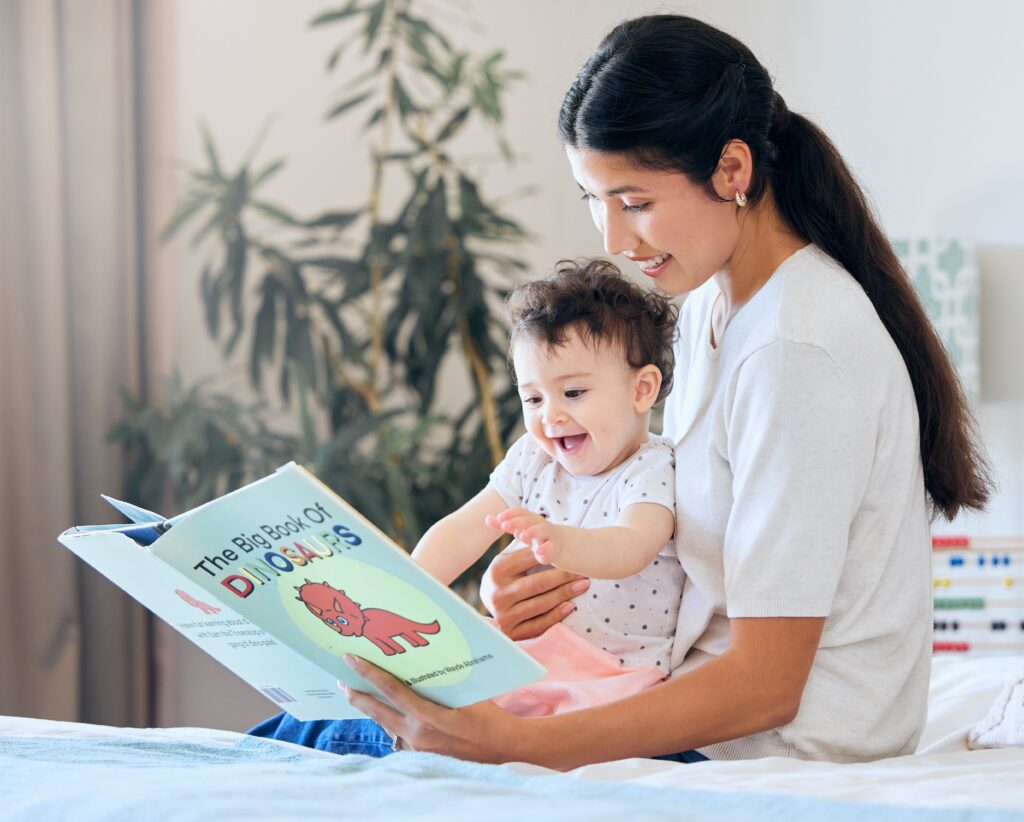“Babies don’t need to learn to read,” you might think. But here’s the thing, reading isn’t just a skill. It’s a relationship. And that relationship starts before your child ever says their first word.
Reading aloud to children starting in infancy builds brain connections that lay the foundation for literacy, language, and social-emotional development. When it comes to how to read, the earlier you start, the better.
What Does Learning to Read Actually Mean?
Before we get into the tools and tips, it’s helpful to define what we mean by “learning to read.” It’s more than just sounding out words.
Reading is a complex process that blends:
- Phonemic awareness (recognizing sounds)
- Vocabulary building
- Story comprehension
- Emotional connection with language
And all of those start early, often since birth, through repeated exposure to sounds, rhythm, and stories.
From Crib to Conversation, How to Read to Babies
Yes, babies!
Even if your child can’t talk back yet, their brains are actively forming connections every time you read aloud. Those silly animal noises and exaggerated expressions? They matter. A lot.
Here’s how to do it:
- Choose high-contrast board books with simple images and patterns.
- Use your voice like an instrument, vary pitch, tempo, and tone.
- Hold books close to their face so they can see your expressions and the pages.
Toddler Talk, Turning Stories into Conversations
As children start pointing, babbling, and saying single words, you can shift from simply reading to engaging.
Here’s what that looks like:
- Ask open-ended questions: “What do you think will happen next?”
- Let them turn the pages, even if it’s back and forth a dozen times.
- Point to and name objects: “That’s a bus. B-b-bus.”
These small moments build vocabulary, comprehension, and curiosity, all key to how children grow into confident readers.
Don’t skip the same books over and over! Repetition builds mastery and comfort. Yes, even the one you’ve read 20 times this week.
Preschool Power, Pre-Reading Skills in Action
By ages 3-5, children are ready for more structured pre-reading activities, but they should still feel like playing!
Here’s how to support reading readiness:
- Play rhyming games (“cat-hat-bat”)
- Sing alphabet songs and sound out letters
- Label items around the house with sticky notes
- Encourage pretend reading, they’ll mimic your voice and storytelling
This is also the time to introduce multisensory materials. Think letter magnets, tactile tracing cards, and storytime with movement. When kids use their whole bodies, they engage more deeply. And when they’re engaged, they remember.
Kindergarten and Beyond, Early Literacy at Home
By age 5 or 6, most children begin decoding words. But decoding isn’t the finish line, it’s the starting block.
Here’s how to continue supporting how to read at home:
- Let them read to you, even if they make mistakes.
- Use phonics-based readers to build decoding confidence.
- Ask questions that prompt prediction, reasoning, and empathy.
Keep the reading environment low-pressure. Celebrate effort, not perfection.
If your child is struggling, remember: every child develops at their own pace. What matters most is consistency, encouragement, and modeling a love for reading.
A Note on Starting Since Birth
If there’s one thing to remember, it’s this: the journey of how to read begins long before your child opens a book on their own. It starts with your voice. Your warmth. Your time.
By nurturing language and connection since birth, you’re not just teaching letters and sounds, you’re shaping confident, curious, lifelong learners.
Want More Resources on Child Development?
We’re here to help.
At I’m Just A Kid (IJAK), we provide evidence-based programming and hands-on experiences that help children grow in ways that feel joyful, playful, and developmentally sound. Whether you’re nurturing early literacy, emotional intelligence, or multisensory learning, we’ve got your back.Explore our parent workshops, play-based curriculum, and community programs to support your child’s growth, right from the start.
